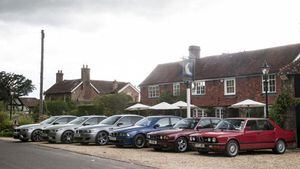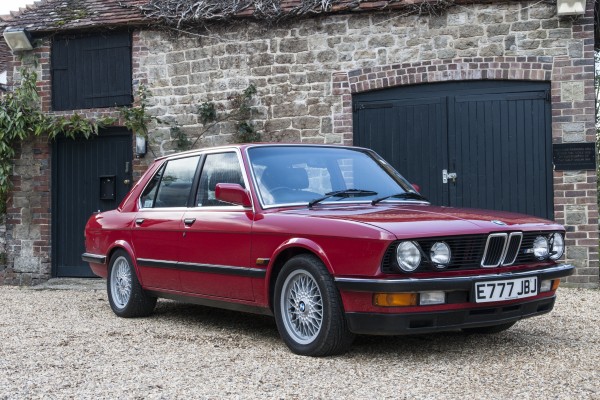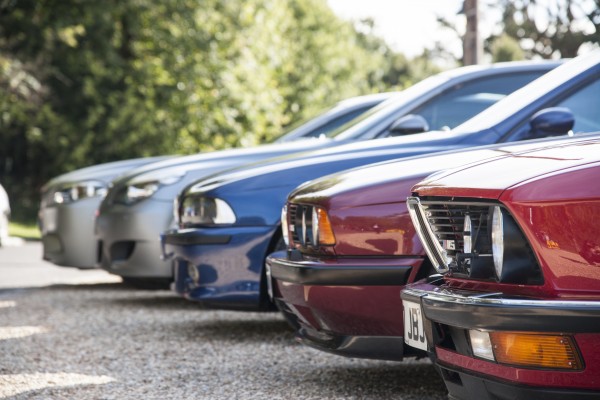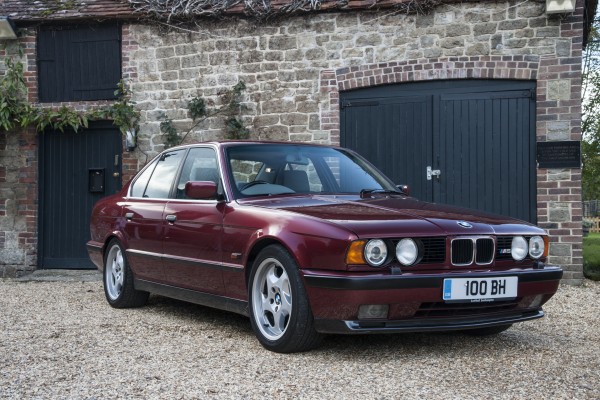Behind the wheels of legends: Driving BMW’s heritage models
We were allowed to drive some of Munich’s finest out and about in the British countryside

Throughout the years, BMW has created some of the world’s most iconic vehicles. Many of these fall within the M5 family, and it was these that we were recently privileged to drive. Peppering them were a variety of other BMW legendary vehicles and we were fortunate enough to be allowed behind the wheels of these too.
We first darted for one of the cars not in the M5 group – the Z8. Powered by a meaty 4.9-litre V8 sourced from the E39 M5, it’s still fast even today – though in a completely different way to how you’d expect. It’s a clear muscle car, with huge amounts of performance not particularly backed up by good handling. It wallows around quite a fair bit, and the steering has little life to it. The best part? None of this matters. The six-speed manual feels notchy and has a classically solid BMW throw, while the V8 bellows and then wails the more you ask of it. It’s not designed to set track records, but for pottering around town the Z8 is hugely entertaining.
On the subject of track records, we quickly transitioned into a car which was designed to blitz circuit times – the E28 M5. Arguably one of the most iconic M5s ever made, it still looks perfectly in proportion in the midst of today’s oversized SUVs and off-roaders. Inside, it’s a little bit of a button overload. Coming from the tech age of 1988, nearly everything is electric – the seats have huge amounts of adjustment, and there’s a surprisingly powerful air conditioning system fitted too. The driving position is spot on, however, with a thin, wide-rimmed steering wheel thrust into your chest.

Pottering through a smattering of countryside villages, it’s noticeable just how right the E28 looks reflected in shop windows. Passers-by make a beeline to get a look at it, and its diminutive proportions (compared with today’s cars) makes negotiating tight streets and traffic a lot simpler than it was in the bulky Z8.
Of course, out on the open road the performance remains just as impressive as it did in 1988. Packing 282bhp from a 3.5-litre straight-six engine, it had a claimed 0-60mph time of under six seconds back in the ‘80s and, in truth, it feels just as quick today. Everything takes time and effort in the M5 – the gear change is much longer than that found in modern cars, while the throttle pedal and brakes need a good degree of force to make them operate. Everything requires you to be deliberate with your actions, and that’s part of its charm.

We hand the keys for the E28 back and leap into its successor – the E34 M5. Our example is a later 1994 version running a larger capacity version of the engine in the E28 – now 3.8 litres rather than 3.5 litres. Power is up too, now 340bhp, which gives the newer model slightly longer legs than the car it replaced. However, it’s a far more isolated experience, with less of the car’s engine and road noise translated into cabin sound. Sure, this is far better for longer journeys, but on short country sprints such as our test route, it felt just a little more subdued. It still loves to rev out like the engine it replaced, and rewards any input of the throttle with a quality, all-mechanical note.

However, the same sense of meaningful actions is still there. You can’t just punch the throttle and expect the rest to follow; you need to be precise with your inputs – managing the throttle to whisk you through corners effectively, or using the heavy brake pedal with a good degree of force to slow the car down enough. Driving the E34 is a process – and a thoroughly enjoyable one at that.
It’s hard to ignore the lineage in BMW cars. Step from a classic into a modern car from the Bavarian manufacturer and you can see little links between the two. Of course, the M5 makes up a huge part of this history, as do the cars that used its engines, and it’s cars such as these that keep inspiring future models and concepts. We just hope they continue to be as good as some of the classics we were able to experience here.





